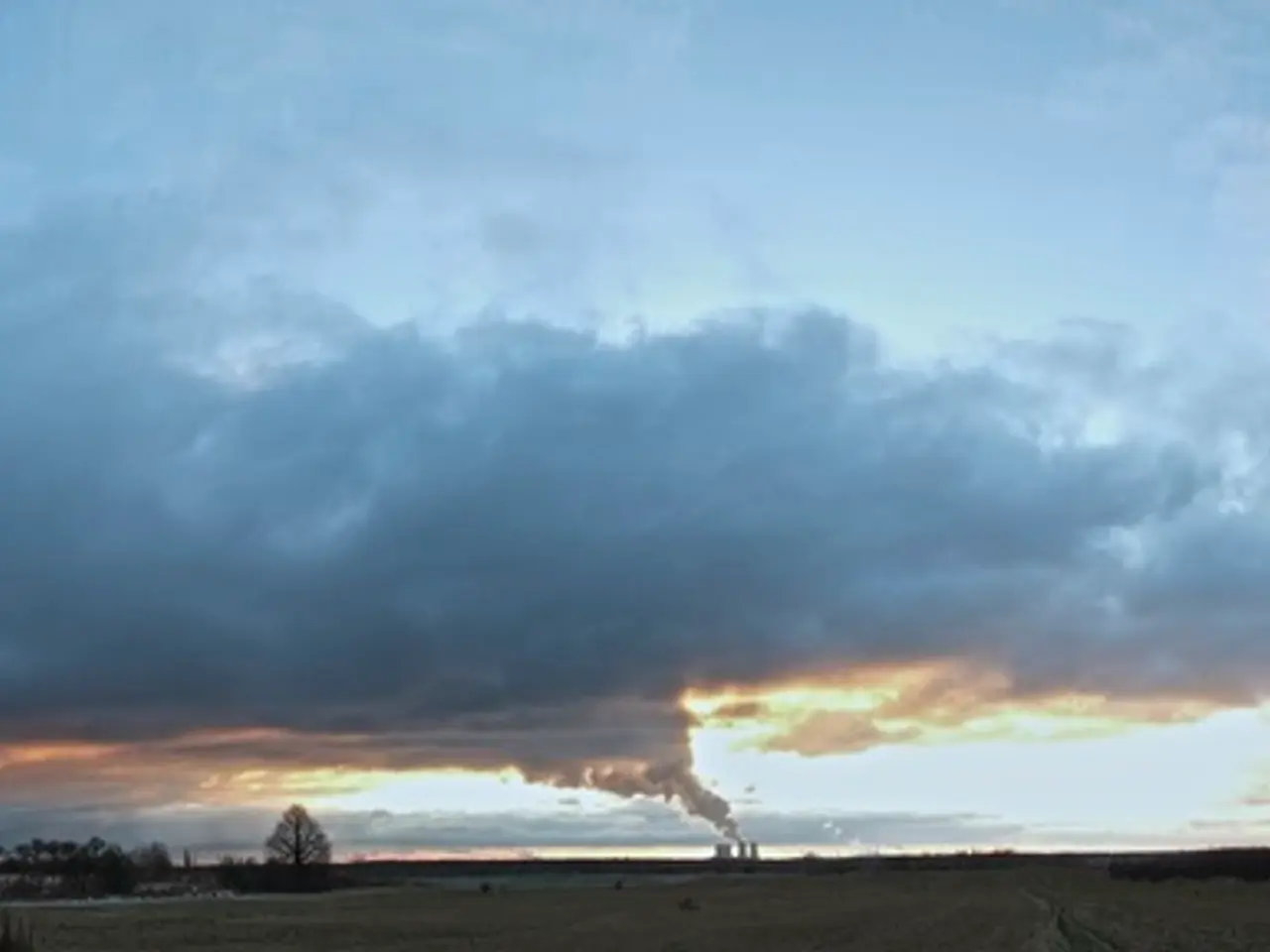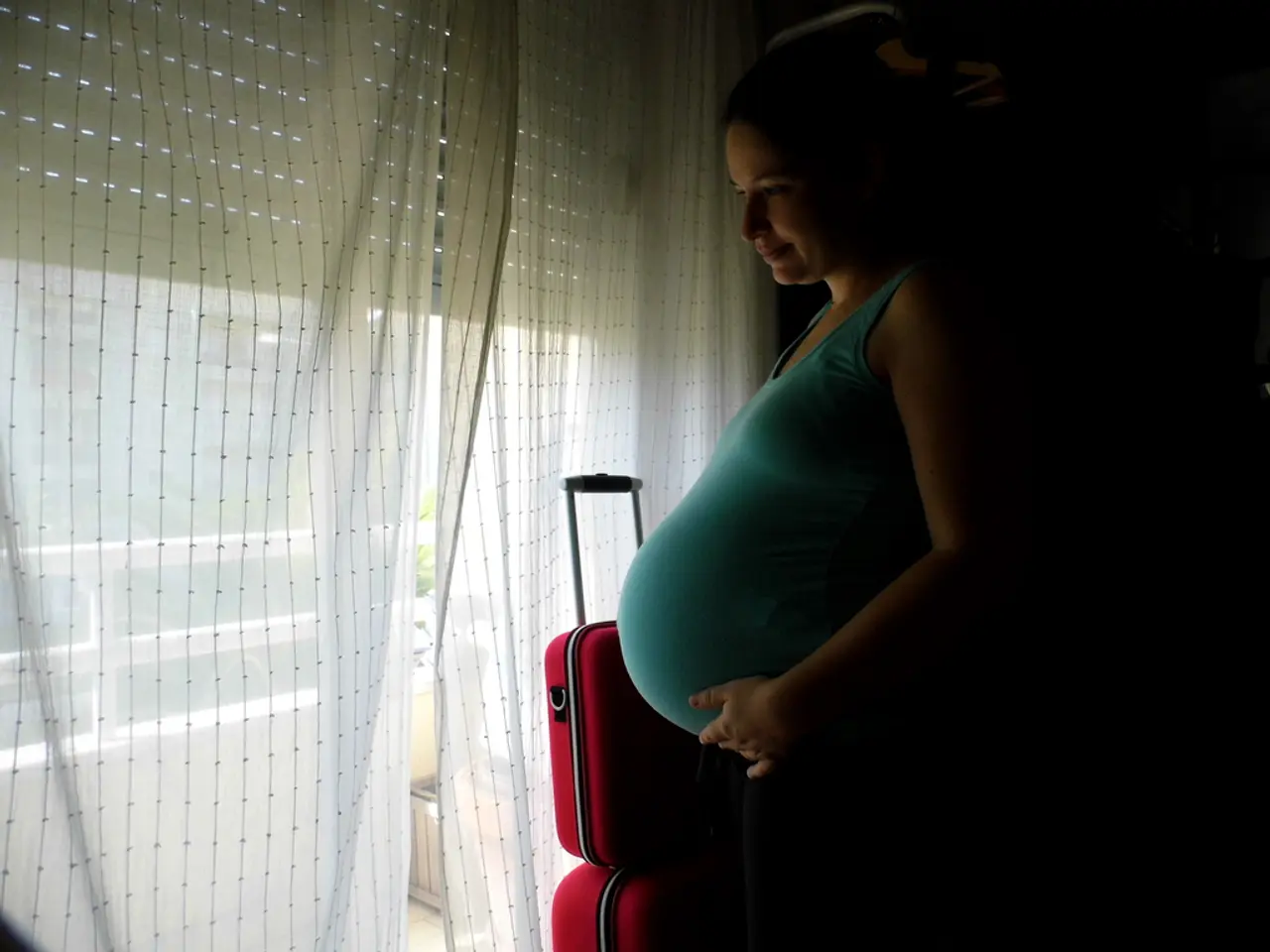California Wildfires Produce Harmful Air Quality - Tips for Maintaining Health amidst Air Pollution
In the face of environmental disasters, such as wildfires, understanding the potential health risks is crucial. Recent studies have revealed that exposure to poor air quality, particularly during wildfires, can pose significant short- and long-term health risks.
During periods of poor air quality, short-term effects often include respiratory irritation, such as coughing and throat irritation. Vulnerable groups, including children, the elderly, and those with pre-existing lung or heart conditions, may experience more severe symptoms, like asthma attacks or flare-ups of lung diseases. Short-term exposure can also increase emergency room visits for cardiovascular problems, such as heart attacks and strokes, within a few days of exposure.
Wildfire smoke, in particular, releases fine particulate matter (PM2.5), which can penetrate deep into the lungs and cause acute respiratory symptoms. The impact of wildfire smoke exposure can persist for months after the fire has ended, continuing to affect lung and cardiovascular health well beyond the initial exposure.
Long-term health effects of chronic or repeated exposure to poor air quality are more severe. Prolonged inhalation of pollutants increases the risk of developing chronic respiratory diseases, such as COPD and lung cancer. Air pollution is recognized by the International Agency for Research on Cancer as carcinogenic, contributing to lung cancer incidence.
Long-term exposure is also linked to cardiovascular disease, with an increased risk of heart attacks and strokes over time. There is growing evidence that sustained exposure to air pollution can impair neurological health, contributing to cognitive decline and neurodegenerative diseases like Alzheimer’s and Parkinson’s.
Children are particularly vulnerable to both short- and long-term effects. Air pollution in children can impair lung development, increase susceptibility to respiratory infections, trigger or worsen asthma, and potentially increase risks of childhood cancers such as leukemia. Neurodevelopment and cognitive abilities can also be adversely affected, leading to attention problems and reduced school performance.
In light of these findings, it is essential to minimise risks and take action during environmental disasters like wildfires. Limiting outdoor activities, especially for sensitive populations, and using air filtration where possible are recommended measures. Keeping windows and doors closed to prevent pollutants from entering is crucial when air quality is poor. Staying indoors is essential, and the CDC recommends creating a DIY filtration unit with box fans.
Running a car's air conditioner can help filter out pollution, and the NOAA and EPA issue alerts about dangerous levels of air pollution. It is important to note that the risks of high pollution levels are especially high for anyone with pre-existing lung conditions like asthma or chronic obstructive pulmonary disease (COPD). High pollution levels are dangerous for everyone, even short-term exposure can make it hard to breathe and contribute to long-term health issues.
The Environmental Protection Agency (EPA) advises using high efficiency filters labeled "HEPA" or MERV 13 or higher, or setting central air conditioning to "recirculate mode". A portable air filter can also be used if available. Wearing a face mask or N95 respirator when leaving home is also recommended.
An AQI of 100 is considered hazardous for sensitive groups, while anything over 150 poses risks to everyone. Currently, the air quality index (AQI) for most of the LA metropolitan area is well over 300. AirNow.gov is a resource for tracking air quality reports across the country.
Inhaling wildfire smoke can irritate eyes, nose, throat, and lungs. Particulate matter, including dust, dirt, soot, and smoke, is a major component of wildfire smoke. Ground-level ozone, a harmful type of air pollution that forms when certain chemicals are exposed to heat and sunlight, is another concern.
As of now, three California wildfires are currently burning across the greater Los Angeles region. It is crucial to avoid using scented candles, gas, propane, fireplaces, or vacuums when air quality is poor. By taking these precautions, we can protect ourselves and our loved ones during these challenging times.
- In the context of wildfires, understanding the potential mental-health risks is equally important, as stress levels may escalate due to environmental disasters, leading to anxiety and sleep disturbances.
- To mitigate the health risks during poor air quality, practicing health-and-wellness habits like fitness-and-exercise can strengthen the immune system and improve overall health, making individuals more resilient to air pollution.
- Research in the field of environmental-science has identified climate-change as a significant factor contributing to an increase in wildfire incidents and their associated health risks, as warmer temperatures lead to drier conditions, creating ideal conditions for wildfires to start and spread.
- Taking a holistic approach to understanding and addressing the health effects of air pollution requires considering its implications on mental-health, as environmental disasters like wildfires can cause trauma, depression, and post-traumatic stress symptoms.




